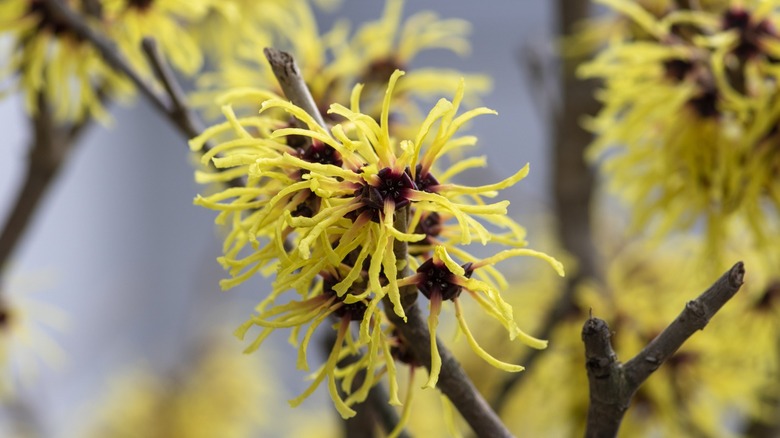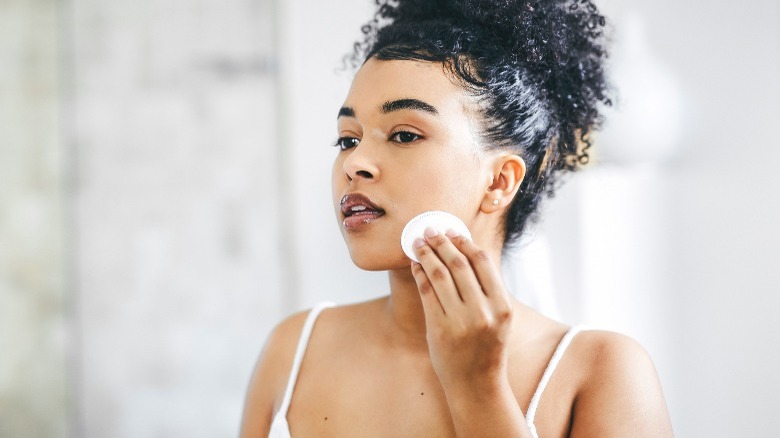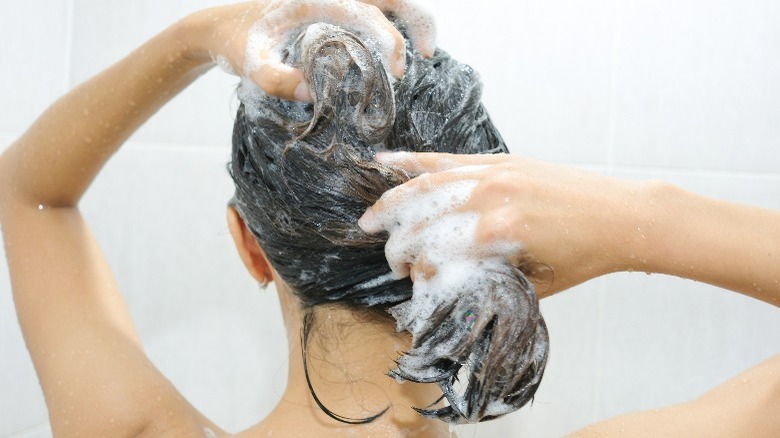Cautious About Witch Hazel? Turns Out It's Loaded With Potential For Your Beauty Routine
Despite its rather ominous name, witch hazel is not an ominous ingredient used for spell-casting potions — that is, unless those potions are for glowing skin. Witch hazel, known scientifically as Hamamelis virginiana, is a plant native to North America that has been used in traditional medicine for decades. An astringent, witch hazel draws excess oil and water from the skin, giving the appearance of smaller pores, while still allowing the skin to retain its natural moisture. Witch hazel can also aid with inflammation, where it contains antioxidants and tannins (the same found in wine) that mitigate redness and strengthen sensitive skin.
Because of these properties, and the fact that it's a natural product, witch hazel has been popularized in skincare routines, despite some debate. Where witch hazel can have fantastic benefits on your skin when you first begin to use it, some have argued that the ingredient could harm your skin with prolonged use. This is because witch hazel products often contain high concentrations of alcohol, a drying ingredient, so you might not be receiving the skin benefits you should. But again, fear not. With the right products, witch hazel can work wonders for your skin, and has benefits beyond even your everyday routine.
How to use witch hazel
Witch hazel is typically used as a toner after cleansing your skin. Where toners are notorious for their alcohol content, remember that when it comes to shopping for witch hazel products, choose those that are alcohol-free to ensure that you are actually experiencing the benefits of the ingredient. And because the tannins in witch hazel can make the skin sensitive over time, also limit your use of witch hazel to at most once a day — if not less — to avoid any issues, especially when you know you have sensitive skin, or when your skin is prone to dryness. It's always a good idea to test out any new product on your skin before swiping it all over your face, and witch hazel is no exception. Holistic pediatrician Dr. AnaMarie Temple explains in a TikTok video that witch hazel can also be used to treat acne, where it can reduce irritation associated with acne, and keep the bacteria at bay that might contribute to it, as witch hazel is also an antiseptic.
Perhaps toners are not for you, though. Witch hazel can also be found in sprays or various serums, which are often packed with additional skin-loving ingredients.
Benefits beyond your skin
Because of its oil-absorbing properties, witch hazel is also frequently used in haircare products for those looking to address excess oil on the scalp, which can lead to uncomfortable greasiness. And, because of its penchant for reducing inflammation, witch hazel can also alleviate symptoms of certain scalp conditions that cause pain, itchiness, redness, or a buildup of dead skin, such as psoriasis. Witch hazel can be found in shampoos, scalp serums, and even hairsprays, when you want your hairstyle to stay perfectly set. Because of its antioxidant properties, witch hazel can also assist in protecting your scalp from the sun's UV rays. This area of our skin is often forget about when it comes to sunscreen, but our scalp is just as important to protect.
Despite the several benefits of using witch hazel, remember that witch hazel cannot do everything. Be sure to use witch hazel with products that are highly moisturizing for both your skin and scalp, and consult a dermatologist should any irritation occur when using witch hazel.


